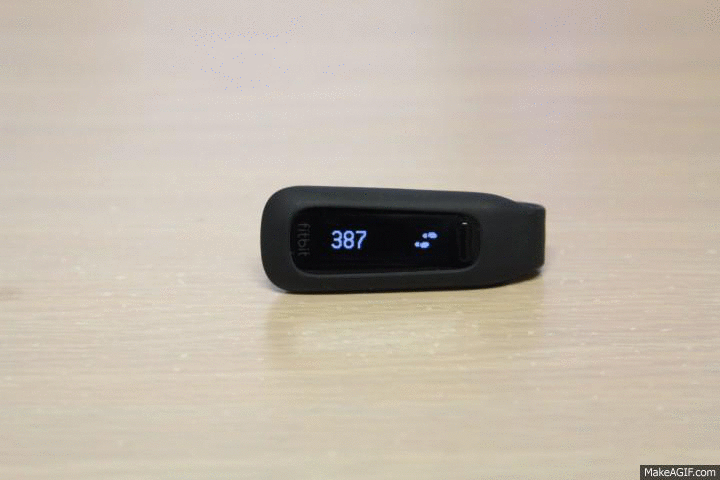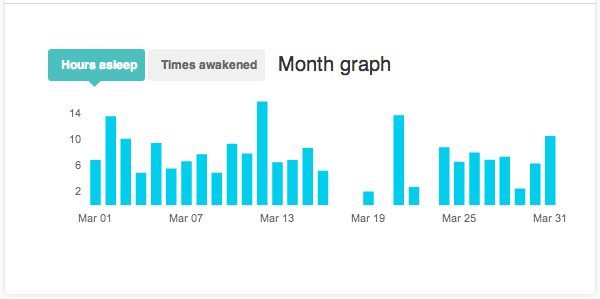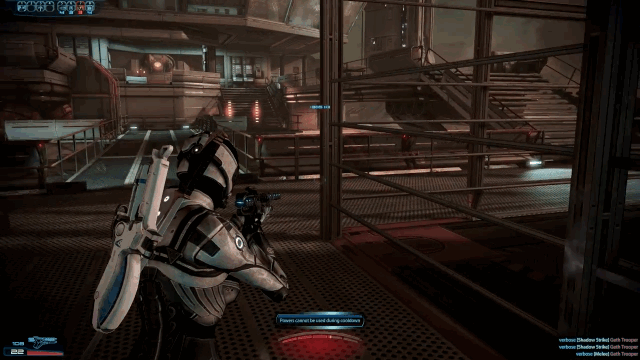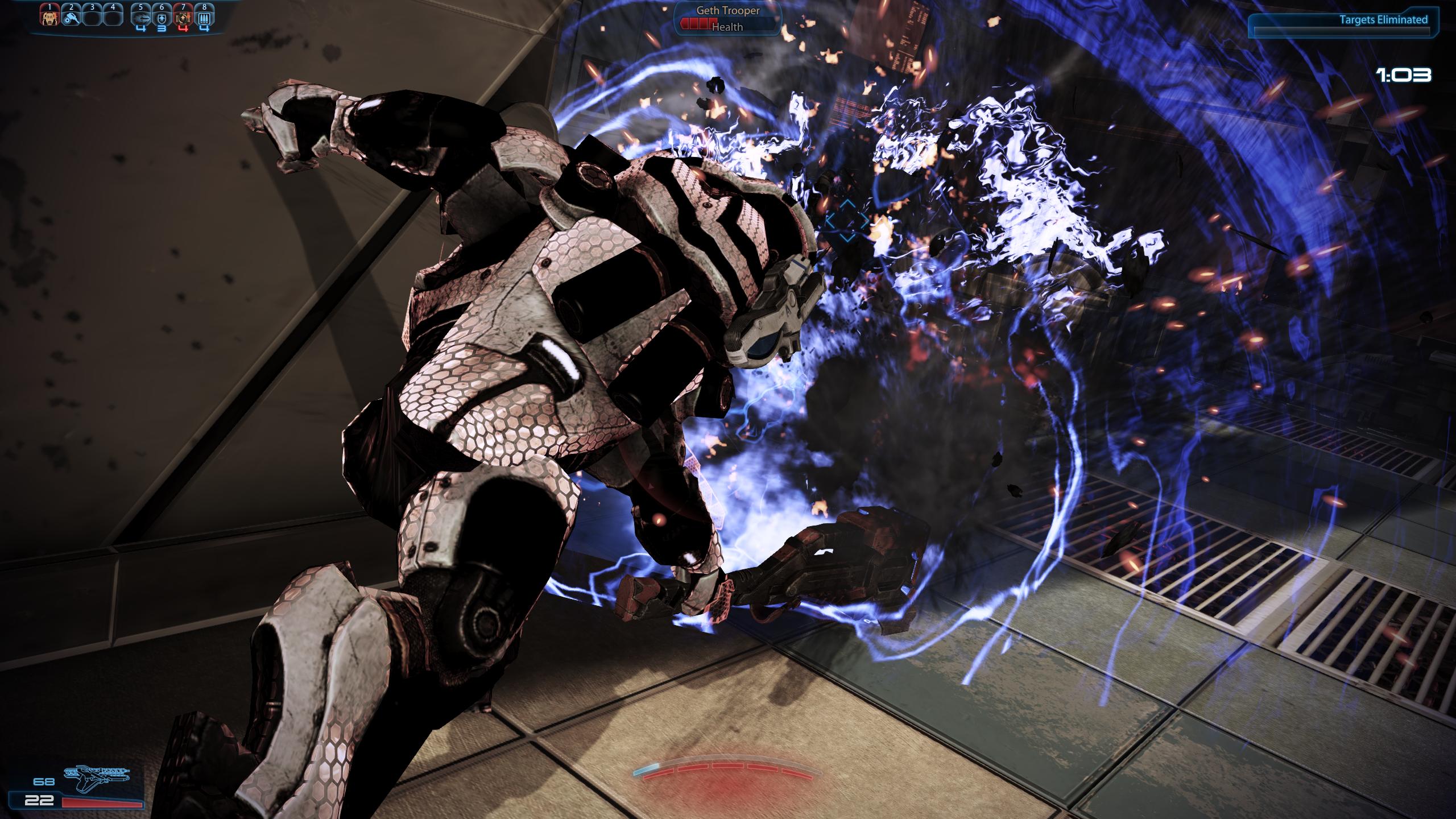via The Verge.
Tag Archives: gif
The Fitbit One
I’ve owned a Fitbit One since the 10th of January, and two weeks ago was the first time I did over 10,000 steps in a single day.
On the surface of it, the Fitbit is a pretty cool little gadget. Some may see it as an expensive pedometer, but it’s a little more than that.
I’ve owned a number of various pedometers over the years. I remember this one that, I kid you not, came out of a cereal packet; some promotion about eating healthier and doing more exercise, or something — it was quite a few years ago. Man, I remember a time in primary school when I used to wear a Pocket Pikachu to school every day for months on end – an truly fascinating tale for another time, I assure you – and more recently, the time when Pokemon Soul Silver came with the Pokéwalker. Those pedometers were great if all you wanted to do was track your steps, feed Pikachu, or transfer gifts to and from your GameBoy Color, but that was about all they were good for.
Which brings us to the Fitbit One. The One is perhaps the first pedometer I’ve owned that’s actually designed for the 21st century. For one, it’s designed to connect with other devices; it uses Bluetooth to connect to your iOS device or Android device (well, some of them), where the Fitbit app can then sync and show you all kinds of stats (more on this later). All Fitbit devices are also backed by a great website, and there’s even a social aspect to the Fitbit ecosystem that lets you see how you’re doing against your friends.
After um-ing and ah-ing over the purchase for a number of weeks, I decided to splurge on an expensive pedometer. I originally bought a Fitbit One mainly out of curiosity, being the gadget nut that I am, but little did I know what I was getting into.
It tracks steps, but it does so much more than that. Through a series of screens on the One, you can see how many steps you’ve taken since midnight, how many flights of stairs you’ve climbed, the (estimated) distance you’ve travelled, the number of calories you’ve burned, a visual representation of your exercise for the day, what the current time is, and when your next alarm is set for. Pressing the single button on the front of the One cycles through these different screens.
But if you hold the button, it starts a timer which lets you track how much sleep you’re getting. Instead of wearing the One in the belt clip, you put it into the wristband and wear it with you when you sleep. Doing so lets you see how much sleep you’re getting every night, but it does require a bit of vigilance on your part by wearing it every night. Of course, it also tracks the quality of your sleep by seeing how much you move during the night. And in the morning, the One will wake you up with a “silent alarm”, all of which can be configured via the iOS app. They can repeat, you can set up more than one, and all in all, it’s a very well thought-out feature. As a thing that just vibrates on your wrist, the One is pretty effective in doing its job of getting you up in the morning.
All of this is backed up by the fantastic website and iOS app, both of which let you see all the information you sync via the iOS/Mac/Windows apps.
At the most basic level, the Fitbit One (and its accompanying ecosystem) are a powerful information toolbox, a dream if you’re a sucker for lovely stats and graphs.
But it’s a little more than that, too.
Mass Effect 3 Multiplayer: thoughts, strategies, and a guide or two
Continuing the trend of abandoned games I’m recently just getting back into (see: Battlefield 3, ARMA 2), I’ve been playing Mass Effect 3. I’m now all up to date with all the single player DLC; I’ve re-taken Omega with Aria T’Loak, I’ve investigated Leviathan, and I’ve had a ball in my swanky new apartment on the Citadel (and even invited a few friends over — if you’re a fan of the Mass Effect series and haven’t played through the Citadel DLC, you’re doing yourself a disservice).
But enough about singleplayer and its DLC temptresses. Let’s talk about multiplayer! On the face of it, ME3 multiplayer seems like the worst thing ever, or at least, not the most appealing. It’s four-player, peer-to-peer coop set in a variety of locations from the single player side missions, against a variety of the enemies. It follows a pretty simple formula: choose a location (there’s quite a few so I’ll link you to the appropriate Wikia page), choose an enemy (Geth, Cerberus, Collectors, Reapers), and choose a difficulty (in order of least to most difficult: Bronze, Silver, Gold, Platinum). From there, you form a four-man squad of varying races and classes, all of which have their own unique skill sets (even though their skills will be shared by other characters, no characters have the same set of skills), choose from a massive variety of weapons, and kit out your characters.
There’s actually quite a bit to it. There’s millions of possible equipment and weapon combinations alone, which makes for unique games. You can be playing with four of the same characters, but each of those characters could have different playstyles (and hence carry a different weapon loadout and consumables, etc). Plus, there’s a heap of stuff you can unlock. 62 weapons, each of which has 10 “levels”. 65 characters over 6 classes. I’m not even counting all the weapon mods, character appearance customisations, consumables, or gear. You can see my stats and what I’ve unlocked so far here.
I’ll get to talking strategy in a sec, but first, a few quick tips.
Narida’s Class Builder is an amazing ME3 multiplayer resource where you can choose how to spec your character. It lets you choose everything about your character, including what weapons, how much damage your character does, what different evolutions your powers can take on and how that affects your damage/other stats, and so on. It’s fantastic. When you’re speccing a new character, consult the class builder to get an idea of what powers do what, and how that affects your cooldowns, that sort of thing. The only place where it falls down is giving you a sense of how fast things happen in game: a five second cooldown might not sound like much, but it’s an eternity when you’re trying to reload your Widow sniper rifle and dodging that Geth Hunter that appeared out of nowhere. For everything else, Narida’s Class Builder is your ME3 multiplayer bible.
Now, a lot of the game resides in the characters, and the classes you play. A lot of it depends on your particular play-style — any decently skilled player will be able to pick up an entirely new (level 20) character and do well enough at the bronze and silver levels, but I find gold and platinum require a higher plane of thinking.
As an example, take this particular Krogan Warlord build. The Warlord is a good character for smashing trash mobs on silver and lower difficulties, but like pretty much all melee-based characters, you generally don’t do enough damage to make it worth your time getting close to bosses (Geth Primes, Cerberus Atlases, Collector Praetorians/Scions, Reaper Banshees/Brutes), which means on Gold and higher, you’re generally going to have a bad time if you run in and try and hammer everything. I remember the first time I played the Warlord. I built my Warlord similar to the build linked above, and, thinking I was some kind of god, charged in and attempted to break all the enemies into little pieces with my hammer. That worked pretty well, at least up until the boss characters — the banshees, brutes, scions, praetorians, and atlases — who proceeded to insta-kill me, every single time I got too close. It was during that game that I discovered that even Brutes have their own insta-kill animation. Up until then, I had no idea brutes could even insta-kill you. But now I know, and these days, I tend to keep my distance with my Warlord — at least until I know I can take a boss down with one hammer attack. And that’s really what ME3 multiplayer is all about, working with the skills you have in order to be an effective asset to the team. It’s about knowing your limits, and playing it smart.
One of the first things I do when I unlock a new character is to look up “builds”, which tell me where I should put points into powers. But builds are only half of the story, and they’re almost worthless without knowing the strategy for that build. So many builds don’t have a guide on how to play that particular character/build, so you have to experiment to see what works and what doesn’t — but then, what’s the point of a build in the first place? Isn’t the whole idea of a build where someone else has already done the experimentation for you, and can just tell you what to do to win? Another thing I found really annoying is how builds recommend specific weapons. What happens if you don’t have that weapon unlocked? For this reason, these guides will recommend what weapon I run with, then suggest alternatives if you don’t have it. Which is why I’m going to open my little strategy guides under the proviso that they work for my particular playstyle(s). I have a few different play-styles — some are easy, others require a little more work on your part.
These are less strategies, and more just me telling you what I’ve found to be effective with any given build. In no particular order…
Aperture
Been wanting to make a GIF of this for a while now.
Mesmerising.
If you’d like to tweet/share/whatever, use this imgur link: http://i.imgur.com/OykDl.gif
Dancing Yoda

The 2012 Olympics in GIFs →
Required watching.
— permalink to this post





